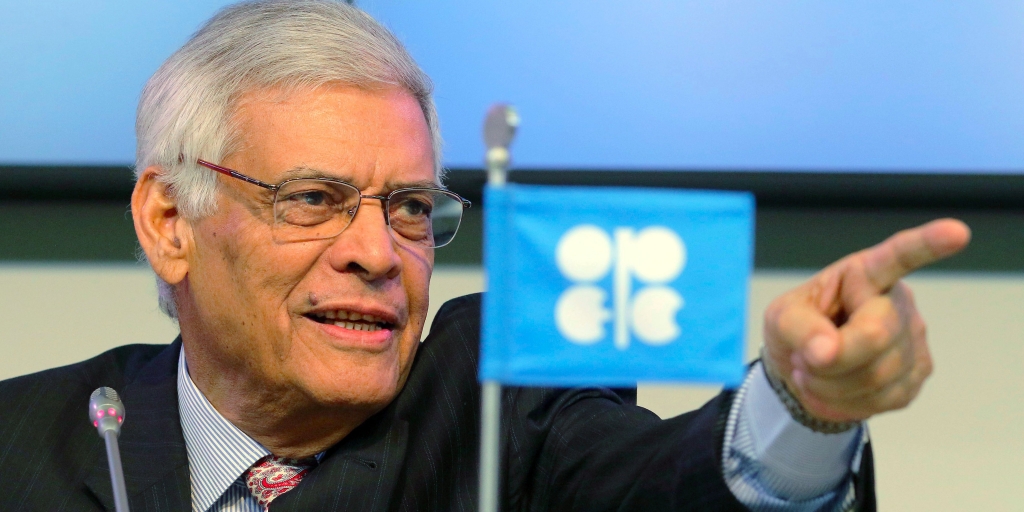-
Tips for becoming a good boxer - November 6, 2020
-
7 expert tips for making your hens night a memorable one - November 6, 2020
-
5 reasons to host your Christmas party on a cruise boat - November 6, 2020
-
What to do when you’re charged with a crime - November 6, 2020
-
Should you get one or multiple dogs? Here’s all you need to know - November 3, 2020
-
A Guide: How to Build Your Very Own Magic Mirror - February 14, 2019
-
Our Top Inspirational Baseball Stars - November 24, 2018
-
Five Tech Tools That Will Help You Turn Your Blog into a Business - November 24, 2018
-
How to Indulge on Vacation without Expanding Your Waist - November 9, 2018
-
5 Strategies for Businesses to Appeal to Today’s Increasingly Mobile-Crazed Customers - November 9, 2018
OPEC fails to stabilise crude oil market as price drops further
In some negative news for crude prices, it was reported today that OPEC nations made a decision to keep producing oil at the current high levels, effectively acknowledging their inability to push up crude prices.
Advertisement
The statement released Friday said that the group will “closely monitor market developments in the coming months”. But conference president Emmanuel Ibe Kachikwu told reporters that there was agreement to maintain “current actual production” that is well above the last formal ceiling set at 30 million barrels a day.
This approach from OPEC, however, could send oil prices even lower as markets may still fail to clear oversupply. Saudi Arabia reiterated its position that other big producers outside the group such as Russian Federation would have to join any output cuts by the Organization of Petroleum Exporting Countries.
Saudi Arabia’s oil minister Ali al-Naimi (C) speaks to journalists as he attend the OPEC meeting …
The meeting ended in disarray after Iran said it would not consider any production curbs until it restores output that has been scaled back for years as a result of Western economic sanctions. “For OPEC, managing the impossible trinity of achieving higher market share, higher prices and higher demand through a nominal target which members continue to breach continues to be hard”.
The downward trend, the minister explained, stemmed mainly from the impact of investment cutbacks and the drop in US tight oil output, which has been declining steadily since May 2015. But changes in demand and global production, including from non-OPEC members, will be major factors as the downturn marked by lower commodity prices lingers impacting revenue of oil-producing countries and companies alike.
OPEC maintained its policy of pumping near-record volumes of oil at a meeting on Friday, according to sources at the group, taking no steps to reduce one of the worst crude gluts in history which has driven down prices. “At this rate of overproduction we will run out of onshore storage in the first quarter”, said Gary Ross, a veteran Opec watcher and the founder of PIRA think-tank.
The Saudis have said they are only willing to talk about production cuts if Iran, Iraq and non-OPEC members like Russian Federation do the same.
“This decision reflects the consensus going into the meeting of OPEC’s policy for prices needing to find a floor to deter new non-OPEC supply projects”, Gareth Lewis-Davies, London-based energy strategist at BNP Paribas SA, said by phone. If Iran is given permission to resume exports it is unclear how soon, at what pace and with how many barrels Iran can offer oil for sale.
“This is just an effort on OPEC’s part to see if they can outlast shale oil exploration and production in the United States”, said Ron Ness, president of the North Dakota Petroleum Council, an industry trade group.
Analysts at Energy Aspects say the kingdom is “only likely to cut once it can influence the market again” – a scenario that is unlikely before the second half of next year considering present plentiful supply.
Advertisement
It said that dialogue and collaboration with consumers, non-OPEC producers, oil companies, and investors are essential to attaining the common goal of a more orderly oil market.





























